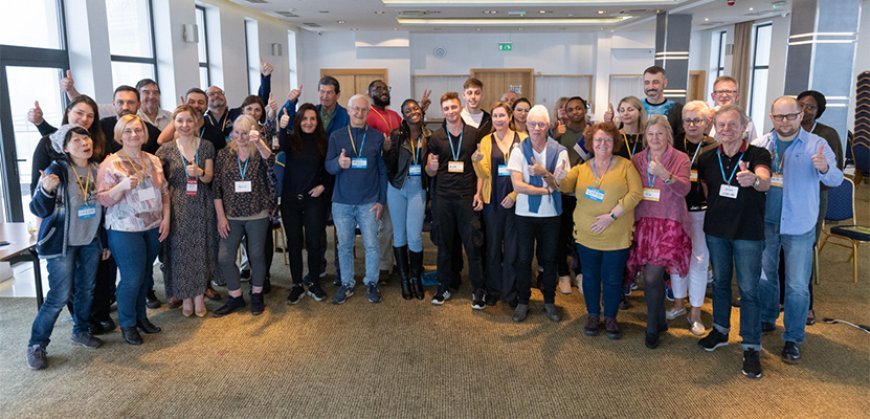Work Abroad in 2025: Top Countries That Offer Work Visas and Residency
What if your work visa didn’t just expire? What if it became a bridge to residency, and then a pathway to citizenship? That’s exactly what many countries in 2025 are offering.

What if your work visa didn’t just expire? What if it became a bridge to residency, and then a pathway to citizenship? That’s exactly what many countries in 2025 are offering. Unlike the United States, where costs rise and immigration is clouded with doubt, these nations are putting forward practical routes. They are routes that let you grow a career without fear of uprooting, routes that let you see your future not as temporary, but as permanent, life-shaping, and secure.
United Kingdom
- If you want predictability and a long-term plan, the UK is one of your best picks.
- To get a Skilled Worker visa, you’ll need a sponsoring employer, a qualifying job, and a set salary. It usually lasts 5 years and can be renewed.
- Healthcare professionals have it even better with the Health and Care Worker visa, which comes with lower fees and quicker approvals.
- Studying in the UK? The Graduate Route gives you 2 years (or 3 with a PhD) to stay back and work.
- Stick it out for 5 years on the Skilled Worker track, and you can apply for ILR, then citizenship.
Canada
- Canada remains the most straightforward for permanent residence, especially for skilled professionals.
- Canada makes things flexible with work permits, whether tied to an employer or open options like post-graduation and spousal permits.
- For those aiming at PR, Express Entry is the main route. Streams like Canadian Experience Class and Federal Skilled Worker look at your age, studies, work experience, and language skills before inviting you straight to residency.
- If you’re in a hot field like IT, healthcare, or engineering, provinces such as Ontario, BC, and Alberta can speed things up with their nominee programs.
Australia
- Australia rewards skills, regional mobility, and employer sponsorship, with strong pay and quality of life.
- Temporary Skill Shortage visa, subclass 482, is the main employer-sponsored route that can lead to permanent residence through the Employer Nomination Scheme, subclass 186.
- Skilled visas 189 and 190 grant direct PR through a points test for age, English, education, and work history, with state nomination boosting chances.
- Regional pathways like 491 leads to PR, then citizenship after residence and character checks.
Germany

- Germany offers stable jobs, high salaries for specialists, and faster citizenship under recent reforms.
- EU Blue Card and Skilled Worker visas require a recognized degree or vocational qualification and a job offer at the required salary level.
- Settlement permits are possible after sustained skilled work, often as early as 21 to 33 months for EU Blue Card holders depending on German language level.
- Naturalization is now possible in as little as 5 years of legal residence for many applicants, subject to integration and language criteria.
Ireland
- Ireland is a smart move for tech, finance, pharma, and healthcare, with a welcoming path to long-term status.
- Critical Skills Employment Permit targets high-need roles such as software engineers, data professionals, and healthcare specialists, leading to Stamp 4 after 2 years.
- General Employment Permit covers wider roles, typically leading to Stamp 4 after 5 years of legal employment.
- Atypical Working Scheme suits short-term locum doctors, midwives, and niche roles. Long-term residency and citizenship follow after required years of residence.
New Zealand
- New Zealand’s system is clear, skills focused, and family friendly.
- Accredited Employer Work Visa requires a job with an approved employer and market pay, with health and character checks.
- Green List roles offer Straight to Residence or Work to Residence after 2 years for selected occupations in healthcare, engineering, and tech.
- The Skilled Migrant Category Resident Visa rewards capability with permanent residency, and the residency period rewards commitment with citizenship.
Portugal
- By offering realistic residency and citizenship timelines while maintaining its celebrated lifestyle, Portugal has become a magnet for professionals in tech, startups, and remote work linked to local contracts.
- D3 visa supports highly qualified professionals with a job offer and recognized credentials.
- Tech Visa channels certified companies to sponsor foreign talent with streamlined checks.
- PR and citizenship are typically available after 5 years of legal residence, with language and integration requirements.
How to choose your country

Pick based on your profile and the speed to PR rather than hype.
- Degree recognition and licensing matter, especially for engineers, nurses, and allied health.
- Language operates as both an enabler and accelerator in migration. English-oriented countries reduce entry barriers, while European systems such as those in Germany, Portugal, and the Netherlands actively incentivize integration through language learning by rewarding migrants with quicker settlement options.
- Salary and sponsorship frameworks remain dynamic rather than fixed. This volatility makes it critical to confirm precise thresholds tied to occupational classifications before lodging an application.
- Students should map study to work. Graduate work rights are strongest in the UK, Canada, Australia, and New Zealand.
- Families should check spouse work rights and childcare costs early.
Action plan for 2025
- Match your occupation to each country’s shortage lists or defined salary bands.
- Prepare language scores early. IELTS or PTE for English countries, and start B1 German if targeting Germany.
- Get credentials assessed, for example engineering bodies, nursing councils, or degree recognition portals.
- Build a clean paper trail, employment letters, pay slips, and tax records. These speed both permits and PR.
- Always verify details on official portals before you apply. Policy shifts can impact salary thresholds, eligible roles, and timing.
The world is open in 2025 for skilled professionals. If US plans feel uncertain or expensive, choose a market that values your skills, offers work rights quickly, and gets you to permanent residence on a predictable clock.
FAQs
Which countries offer work visas as an alternative to the US?
Countries like the United Kingdom, Australia, Canada, Germany, and Ireland offer work visas for skilled professionals, students, and certain specialized roles. These visas often provide a pathway to permanent residency.
Can international students work after graduation in these countries?
Yes. The UK has the Graduate Route visa, allowing students to work for up to two years after graduation. Australia, Canada, and Ireland also provide post-study work options, letting graduates gain professional experience before applying for permanent residency.
Are there visa options specifically for healthcare professionals?
Yes. The UK’s Health and Care Worker visa targets doctors, nurses, and adult social care professionals. Canada, Germany, and Ireland also have specific pathways for healthcare workers due to high demand in the sector.
Do I need a job offer before applying for a work visa?
Most countries require a job offer for work visas. For example, Germany’s Employment Visa and the UK’s Skilled Worker visa require employer sponsorship. Canada offers both employer-specific and open work permits, with open permits allowing more flexibility.
Can work visas lead to citizenship?
Yes. Most countries offer pathways from work visas to permanent residency, which can eventually lead to citizenship. For example, Germany allows naturalization after several years, and the UK and Canada have clear citizenship paths for long-term residents.

 Admin
Admin